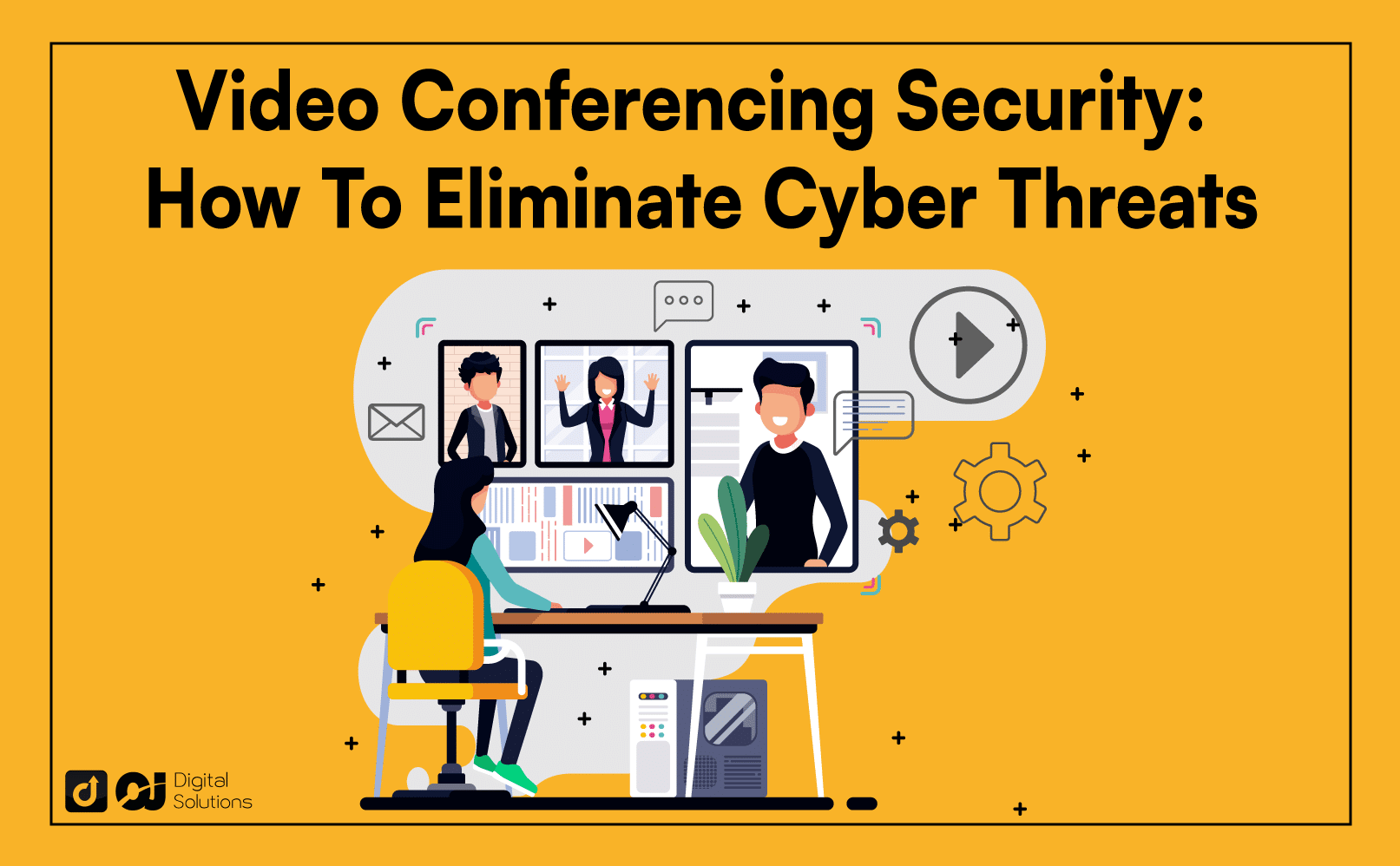Virtual meetings have started to take the industry by storm, and consequently, the need for secure video conferencing.
Is your business already adapting to the modern standards of web security?
Good cybersecurity conferencing practices start with creating password-protected meetings to avoid unwanted participants.
Doing so lets you limit random brute-force attacks from unwanted parties trying to compromise your meeting.
In this article, we’ll dive deeper into video conferencing security best practices and when to use them.
Let’s start.
Secure Video Teleconference Standard

The problem with most businesses today is they don’t know their vulnerability until an actual compromise.
Instead of putting out the fire, the best cybersecurity approach would be to improve your protection systems to avoid a fire (or compromise) breaking out in the first place.
One thing that often gets companies into hot water is using shortcuts to add music, change backgrounds, or use unsupported third-party software to upgrade the Zoom experience.
For example, when learning how to add background music to a video, using random software might go beyond compromising your meeting but also compromising your computers as well.
We always recommend using secure video conferencing software like Zoom when trying to add upgraded features or improve your video conferencing experience.
Our article divides best practices into two: practices specifically for Zoom and practices for overall web security.
Let’s start learning about how to protect your Zoom calls.
Video Conferencing Best Practices: Zoom Edition

- Make Meetings Private.
As mentioned, always place a password or create a waiting room to scan participants before they enter the meeting. - Lock the Meeting.
To avoid a compromise, ensure the participants join early so the host can lock the meeting and avoid additional intrusions. - Send Invitations Through Secure Channels.
Instead of sending invitations loosely through social media, send them formally over email or text directly to participants. We don’t recommend sending links to a middle party and have them sent to the participant. - Explore Zoom’s Mute Options.
When conducting video conferences, you can disable participants’ chat, video, or audio options. While video or audio conferences are less risky, the chat can pose a threat when the participants share malicious links. - Disable File Sharing.
If you still need your chat option for participants to chime in, you can disable file sharing to prevent malicious software from spreading. However, participants might still be able to share malicious links. - Block Uninvited Guests.
It helps to have an admin in the meeting who can block uninvited guests or unwanted participants. Aside from software breaches, it’s hard to tell if any malicious actors in the form of random participants want to record sensitive information and use it for questionable purposes. - Update Your Software.
Last but not least, always ensure your software is updated with the latest version before you start the call. Check for updates at least an hour in advance.
Video Conferencing Security Risks: Zoom Edition

- Public Wifi
Using public WiFi to connect to a private Zoom call is risky because it can be compromised. Use a private connection for important meetings or install a VPN and anti-virus. - Borrowed Devices
We also don’t recommend borrowing laptops or smartphones to participate in important meetings. You’ll never know if the borrowed device is already compromised. - Weak Passwords
Avoid using 1234 or other easy-to-guess passwords. Scramble your passwords to protect your meetings from Zoombombing. - Share Screen Control
Don’t give share screen control to participants who don’t need it. Have your participants ask whether they can share their screens first. It’s up to the admin to grant it.
Best Web Security Practices

1 – Perform Regular Malware Scans.
Assuming you already have an antivirus, routinely scan your computer to detect possible malware, viruses, or other infections.
2 – Avoid Questionable File Downloads.
If you have an antivirus, it should scan a file before downloading and notify you about its risks. However, the best security practice is avoiding downloads from questionable sources altogether.
3 – Employ Cybersecurity Services.
From small mom-and-pop shops to enterprise-level businesses, it’s important to employ experts to prevent compromises from happening. Washington cybersecurity experts, for example, give customized solutions to fit the scale of your business.
4 – Separate Your Personal and Work Devices.
Use a different computer for personal and professional activities if you have the means. Often, compromises happen from personal activities, including browsing the web, exploring new websites, or opening new files/software.
5 – Practice Proper Email Hygiene.
Never open random or spam email links. If you can’t verify its origin or if an email comes from out of the blue, find other ways to verify it before opening any links attached.
Also, always check the hyperlinks. They might appear like a legit address, but they will redirect you to an unsecured site.
6 – Use Caution When Installing Browser Extensions.
Don’t add the extension to your browser if you don’t need the extension. Also, avoid free extensions that offer sophisticated features for free. Everything comes with a price.
Frequently Asked Questions
Why Is Security Important in Video Conferencing?
Without proper security, video conferences risk Zoombombing, hacking, malicious links and files being shared, and information being stolen.
What Is The Most Important Thing About Security?
The most important aspects of your security include your entire security system, access, authentication, control, and surveillance.
Is Video Call Safe and Secure?
Like everything on the internet, video call also has risks. However, you can keep your virtual meetings safe if you practice proper security protocols and processes like using passwords, keeping meetings private, and avoiding unauthorized file and link sharing.
The Bottom Line
Keeping your video conferences safe does more than just protect confidential information from leaking. It promotes trust, streamlines processes, and allows you to progress without interference.
By applying proper security practices, you can keep your video conferences safe without compromising the meeting experience.
Avoid risky practices and follow the recommended actions above to help protect your meetings and participants.




